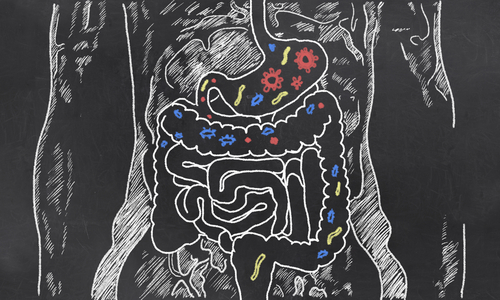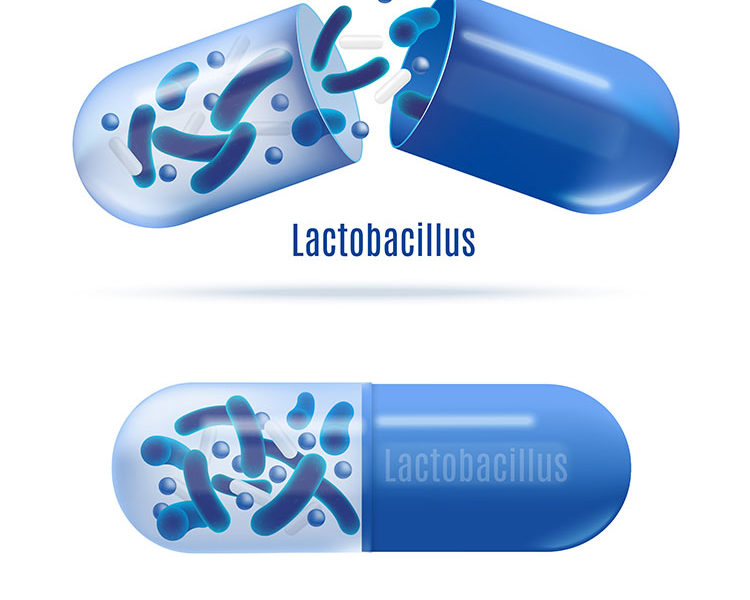
Effective Probiotics: Guide to Assessing Probiotic Ingredients
There are several effective probiotics, the most commonly used include Lactobacillus, Bifidobacterium, Bacillus and Saccharomyces. Each probiotic specie helps to boost and improve a healthy balance of microorganisms in the microbiome of the intestinal system. This ultimately enhances immune function, digestion, brain and heart health. Probiotics not only help to better digestive function, research demonstrates significant effectiveness in easing IBS symptoms, constipation and diarrhea. Lactobacillus, Bifidobacterium, Bacillus and Saccharomyces all hold various health benefits. For example, Lactobacillus rhamnosus, Lactobacillus acidophilus, Saccharomyces boulardii and Bacillus coagulans are particularly effective when it comes to reducing diarrhea. On the other hand, the strains Bifidobacterium longum and Lactobacillus rhamnosus work best to enhance brain health.
Know What to Look For
Now that probiotics are more well known, it is essential to understand that different species have both complementary and differing properties. In other words, different species do a lot of the same things, but can also be more effective with certain health conditions. This points to the advantage of choosing multi-specie probiotic blends. It is smart to take advantage of all the healthful benefits different species offer. To ensure the consumer purchases high-quality probiotics, it is vital to check if the company states the species used, colony forming units (CFUs), storage conditions, recommended dosage and the expiration date.

Know Which Probiotics Should Be Shelved or Refrigerated
Some probiotics can survive at room temperature, whereas other species should be refrigerated. The probiotics that can survive at room temperature are in spore form, such as Bacillus subtilis, Bacillus coagulans and Bacillus clausii. The spore works to protect the organism from stomach acid while it is in the stomach. Understanding the difference between shelf-stable probiotics and ones that require refrigeration is essential when it comes to assessing each supplement.

Know the Scope and Benefits of Each Strand of Probiotic
Each probiotic specie contains different benefits and health-boosting factors.
- Lactobacillus Lactobacillus has numerous species and strains. Species include L. acidophilus, L. rhamnosus, L. plantarum and L. casei, among others As a customer, it is helpful to know which benefits come with which specie. Along with the common benefits of probiotics in general, research demonstrates that L. acidophilus effectively helps reduce the symptoms of constipation and diarrhea. Health experts claim that L. rhamnosus can work to combat eczema (atopic dermatitis). Children usually show signs of eczema at an early age, and the skin disorder may continue into adulthood. A group of researchers found that L. rhamnosus helped to prevent children from experiencing eczema. Research on L. plantarum demonstrates its effectiveness at preventing pathogenic bacterial adhesion by both competitive exclusion and the release of anti-bacterial factors called bacteriocins. This allows for a wide diversity of species in the intestine, providing a balanced microbial ecosystem where good bacteria can grow and pathogens are prevented from creating disease. Lactobacillus casei may help improve cognitive function by easing symptoms of Chronic Fatigue Syndrome which is often accompanied by anxiety. A double-blind research study showed a positive result with the group taking the probiotic. In addition, symptoms of anxiety lowered. L.casei reportedly quickens the rate of recovery for those suffering from pneumococcal pneumonia by using various cytokines. The cytokines play a role in elevating the immune response.
- Bifidobacterium Bifidobacterium, like Lactobacillus, has many different strains, which contain both commonalities and unique benefits. B. longum is a type of bacteria which populates human bodies from birth. This strain of probiotic works to churn sugars into lactic acid. B. longum helps to alleviate constipation and stress. It is best to take this strain of probiotic with milk or yogurt.
B. bifidum plays a vital role in helping the innate immune system respond to an infection. The microbe also helps to balance the good bacteria in the gut by fighting off pathogens, ultimately promoting smoother digestion. The microbe B. lactis helps the immune system by stimulating the production of antibodies.
- Yeast Yeast has been a common aspect of cooking or brewing beverages for centuries, and the fermentation process is tough to complete without the yeast, Saccharomyces cerevisiae. A close relative, Saccharomyces boulardii, is a particularly effective probiotic yeast when it comes to decreasing intestinal stress, diarrhea and abdominal discomfort. Because S. boulardii is a probiotic yeast, it assists the body in fighting off diarrhea caused by antibiotics, since it is unaffected by antibiotics. Further, it is best known for preventing or treating diarrhea in adults and children.
Final Thoughts
Finding the right probiotic or probiotic blend boils down to your individual needs. Do you have occasional or daily bouts of constipation? Do you have difficulty with digestion, abdominal discomfort or gas? Do you suffer from travelers’ diarrhea or post antibiotic diarrhea? There are many different species of probiotics. They each have features in common, as well as unique characteristics. They all have health benefits, but to take advantage of their unique properties, a probiotic blend may be your best choice.
ProbioSEB Duo™, ProbioSEB Trio™, and ProbioSEB Multi™ are three different probiotic blends formulated and provided by Specialty Enzymes & Probiotics to help complete any formula or probiotic product.




